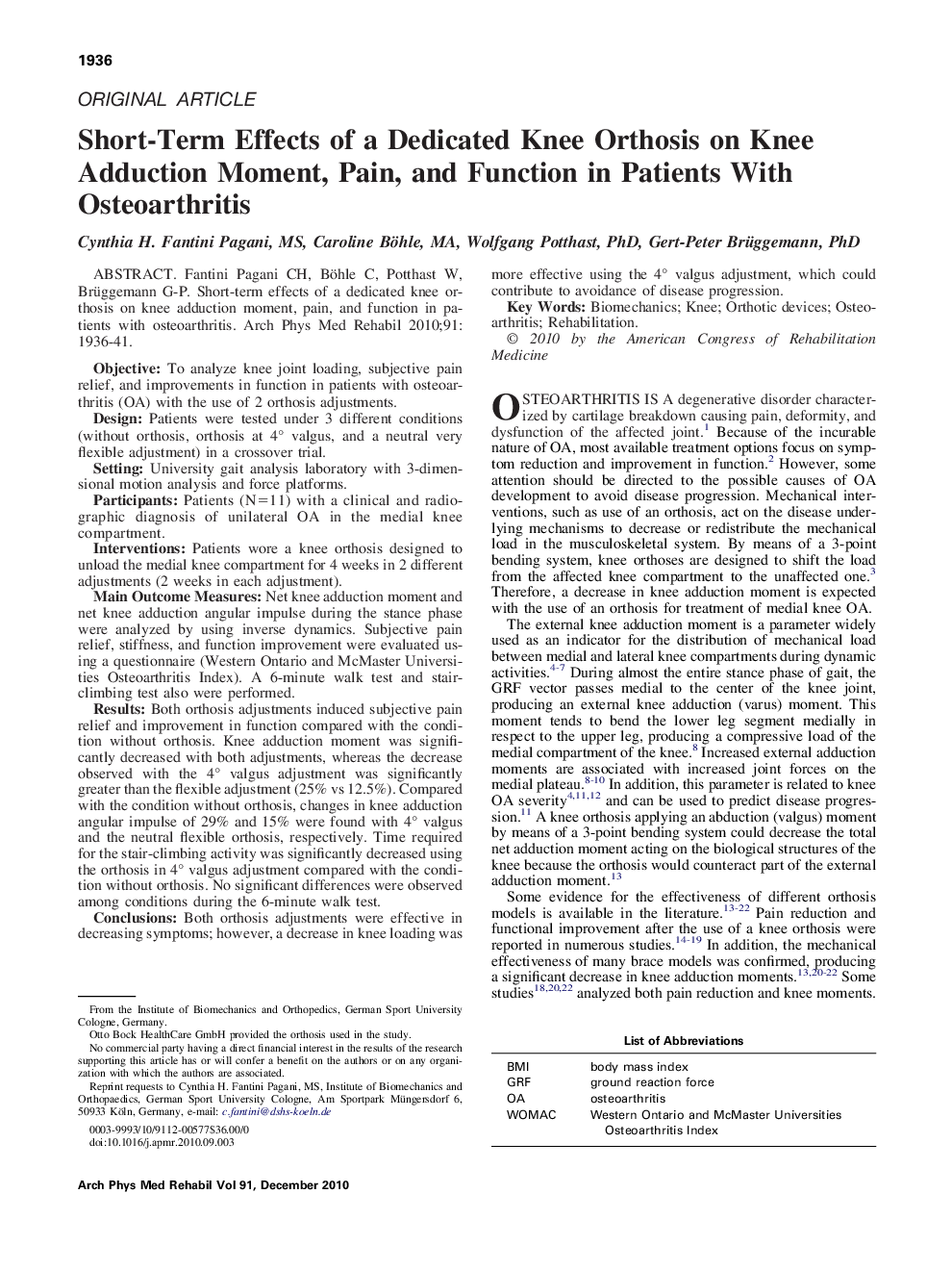| کد مقاله | کد نشریه | سال انتشار | مقاله انگلیسی | نسخه تمام متن |
|---|---|---|---|---|
| 3450411 | 1595745 | 2010 | 6 صفحه PDF | دانلود رایگان |

Fantini Pagani CH, Böhle C, Potthast W, Brüggemann G-P. Short-term effects of a dedicated knee orthosis on knee adduction moment, pain, and function in patients with osteoarthritis.ObjectiveTo analyze knee joint loading, subjective pain relief, and improvements in function in patients with osteoarthritis (OA) with the use of 2 orthosis adjustments.DesignPatients were tested under 3 different conditions (without orthosis, orthosis at 4° valgus, and a neutral very flexible adjustment) in a crossover trial.SettingUniversity gait analysis laboratory with 3-dimensional motion analysis and force platforms.ParticipantsPatients (N=11) with a clinical and radiographic diagnosis of unilateral OA in the medial knee compartment.InterventionsPatients wore a knee orthosis designed to unload the medial knee compartment for 4 weeks in 2 different adjustments (2 weeks in each adjustment).Main Outcome MeasuresNet knee adduction moment and net knee adduction angular impulse during the stance phase were analyzed by using inverse dynamics. Subjective pain relief, stiffness, and function improvement were evaluated using a questionnaire (Western Ontario and McMaster Universities Osteoarthritis Index). A 6-minute walk test and stair-climbing test also were performed.ResultsBoth orthosis adjustments induced subjective pain relief and improvement in function compared with the condition without orthosis. Knee adduction moment was significantly decreased with both adjustments, whereas the decrease observed with the 4° valgus adjustment was significantly greater than the flexible adjustment (25% vs 12.5%). Compared with the condition without orthosis, changes in knee adduction angular impulse of 29% and 15% were found with 4° valgus and the neutral flexible orthosis, respectively. Time required for the stair-climbing activity was significantly decreased using the orthosis in 4° valgus adjustment compared with the condition without orthosis. No significant differences were observed among conditions during the 6-minute walk test.ConclusionsBoth orthosis adjustments were effective in decreasing symptoms; however, a decrease in knee loading was more effective using the 4° valgus adjustment, which could contribute to avoidance of disease progression.
Journal: Archives of Physical Medicine and Rehabilitation - Volume 91, Issue 12, December 2010, Pages 1936–1941